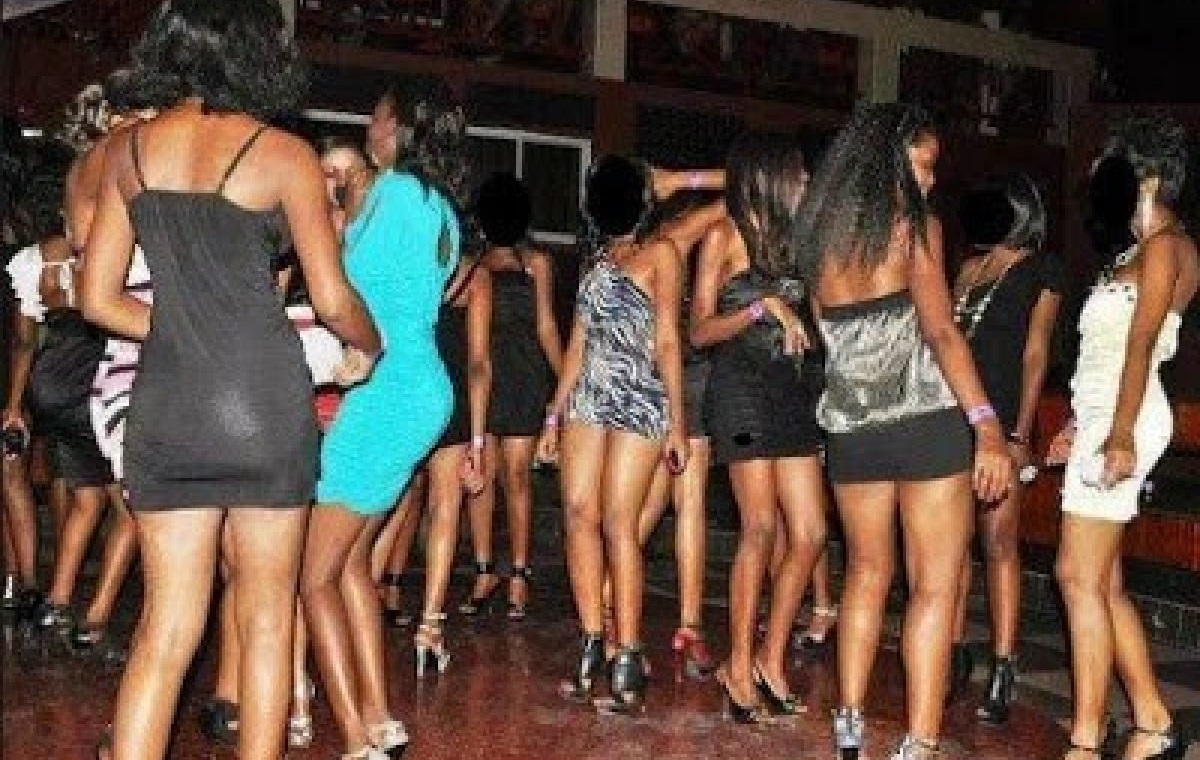Before we decide whether to legalize prostitution, let’s get to the facts, not the myths, about legal prostitution. The Real Harms:
In prostitution, men remove women’s humanity. Buying a woman in prostitution gives men the power to turn women into a living, breathing masturbation fantasy. Research shows that a majority of johns refuse to use condoms, or pay high prices to desperately poor women to not use condoms, or rape women without condoms.
Another man said, “I use them like I might use any other amenity, a restaurant, or a public convenience.” As shocking as these men’s observations may sound to those who think prostitution is like the movie Pretty Woman, their descriptions closely match women’s descriptions of prostitution. The women explain how it feels to be treated like a rented organ. “It is internally damaging. You become in your own mind what these people do and say with you. You wonder how could you let yourself do this and why do these people want to do this to you.”
Women who prostitute have described it as “paid rape” and “voluntary sexual harassment, often worse.” His payment does not erase what we know about sexual violence, domestic violence, and rape. This understanding of the realities of prostitution by the john and the woman he buys is at odds with the notion of prostitution as slightly unpleasant labor that should be legalized. Whether or not it is legal, prostitution is extremely harmful for women. Women in prostitution have the highest rates of rape and homicide of any group of women ever studied. They are regularly physically assaulted and verbally abused, whether they prostitute on the street or in massage parlors, brothels, or hotels. Sexual violence and physical assault are the norm for women in legal prostitution.
Arguments for legalizing prostitution depend on the strength of two arguments: that prostitution is a choice for those in it and that the harms of prostitution are decreased if it is legalized. There is little evidence that either of these arguments is true. But zombie theories about prostitution never seem to die no matter how many facts we beat them down with.
Only a tiny percentage of all women in prostitution are there because they choose it. For most, prostitution is not a freely made choice because the conditions that would permit genuine choice are not present: physical safety, equal power with buyers, and real alternatives. The few who do choose prostitution are privileged by class or race or education. They usually have options for escape. Most women in prostitution do not have viable alternatives. They are coerced into prostitution by sex inequality, race/ethnic inequality, and economic inequality.
Here are examples of these invisible coercions: The woman in India who worked in an office where she concluded that she might as well prostitute and be paid more for the sexual harassment and abuse that was expected of her anyway in order to keep her job. That’s not a choice. The teen in California who said that in her neighborhood boys grew up to be pimps and drug dealers and girls grew up to be hos. She was the third generation of prostituted women in her family. Prostitution more severely harms indigenous and ethnically marginalized women because of their lack of alternatives. That’s not a choice. The young woman sold by her parents at 16 into a Nevada legal brothel. Ten years later, she took six psychiatric drugs that tranquilized her so she could make it through the day selling sex. That’s not a choice.
There is no evidence for the theory that legalization somehow how is never specified decreases the harm of prostitution. In fact, legalization increases trafficking, increases prostitution of children, and increases sex buyers’ demands for cheaper or “unrestricted” sex acts. Whether prostitution is legal or illegal, research shows that the poorer she is, and the longer she’s been in prostitution, the more likely she is to experience violence. The emotional consequences of prostitution are the same whether prostitution is legal or illegal, and whether it happens in a brothel, a strip club, a massage parlor, or on the street.
In a decade, street prostitution in Sweden has decreased by 50 percent, although it has increased in neighboring countries. There is no evidence that women have moved from street to indoor prostitution in Sweden. The intimate relationship between prostitution and trafficking is highlighted when buyers are criminalized. Sweden now has the fewest trafficked women in the EU. The law interferes with the international business of pimping and the practice of buying sex. While there was initial resistance to the Swedish law, now more than 70 percent of the public supports it. Women exiting prostitution use state-provided exit services. Not surprisingly, “those who have extricated themselves from prostitution take a positive view of criminalization, while those who are still exploited in prostitution are critical of the ban.”
Prostitution should not be legalized because it can’t be fixed; only abolished. In order to escape, women need housing, education, jobs that provide a sustainable income, health care, and emotional support. We should all be working on providing women with alternatives to prostitution.



 9 Comments
9 Comments 










Rubbish
There u go… That’s thing I don’t understand about this government and it’s laws on women. If any of those girl should suspect , a man with lots cash, and makes a report, according to the Fatima Bio law, should that man forfeit his money and be sent to prison??
Not in our culture and traditions.
That’s why we are experiencing more harm than because we have neglected our root
True it’s rubbish.
I think prostitution should be legalised and prostitutes given an I.D for their job which shows their regular treatments for the spread of infections and contain the spread of aids.
The big problem now in Sierra Leone is the hidden prostitution which easily spreads sexual diseases.
Yes!!🤔
Everyone has to made their choices, and there should be legally state representative, that respect their choices and protect it, at all costs.
Lots of us Sierra Leonean has sexual intercourse with our Sierra Leonean Sisters(that we’re now using words on them [Prostitute]), including me (Abraham Samura), because I sometimes develop sexual feelings/emotions, that normally inform me to respect the choices of my Sierra Leonean Sisters, because we have lots of evil/negative and demonic things we do with ourselves, and that makes us all bad/sinners .
We must accept and protect everyone’s choices, and develop a protective shield against any choices that tries to crushed other non-Monetary sexual Sierra Leonean people(non-Prostitutes), by fixing the law that will respect every Sierra Leonean people, at all costs and allow our structure Sierra Leonean law to guide and provide protection for us all, and we must respect our religious beliefs, and not allowed our religious beliefs to stand against our human choices of what’s right and wrong (Human Consciousness – Human Conscience), because our own religious beliefs is built on respecting every Conscience of humanity, because every part of humanity has it own Morally religious beliefs/knows and it interpretation of that believing/knowing, because even the Almighty God of the modern religious beliefs/knows concepts or practices, is built on respecting humanity Conscience of what is understood as Right and Wrong or Bad and Good.
Even from the very beginning of creation of the Modern religious biblical beliefs of the Garden of Eden, The Almighty God gave us (Adam and Eve) Conscience to make choices between what’s Right and Wrong or Bad and Evil, with a directives and instructions, that respect and protect their Conscience and decisions/Choices.
So, from these few written text, as a person of Diplomatic, Democratic, Radical, Morally, Religious, Philosophical, and Humanitarian practitioner, that I’ve given, I hope it’ll serve as foundation of my Choices and what I accept and understand/knows to be Legal, Moral, Religious and Ethical, from a Humanitarian perspectives of Consciousness (Conscience).
I’ll be very grateful to have this Conversation/Dialogue with my fellow Sierra Leonean Sisters and Brothers!! 🤔 💬 🧠
Thank you so much for reading, and I’m definitely sure that you’ve learn and understand my position or supportive motion of this debate.🙏🏾✌🏾❤️
My Almighty God will continue blessing and protecting this Republic of Sierra Leone 🇸🇱 and Her people, with love and problem solving, that must lead to Unity and Peace!!🙏🏾🇸🇱❤️
From: Abraham Samura (Current President for the National Union of APC Students [N.U.A.S – Njala University])🚩🚩
Yes!!🤔
Everyone has to made their choices, and there should be legally state representative, that respect their choices and protect it, at all costs.
Lots of us Sierra Leonean has sexual intercourse with our Sierra Leonean Sisters(that we’re now using words on them [Prostitute]), including me (Abraham Samura), because I sometimes develop sexual feelings/emotions, that normally inform me to respect the choices of my Sierra Leonean Sisters, because we have lots of evil/negative and demonic things we do with ourselves, and that makes us all bad/sinners .
We must accept and protect everyone’s choices, and develop a protective shield against any choices that tries to crushed other non-Monetary sexual Sierra Leonean people(non-Prostitutes), by fixing the law that will respect every Sierra Leonean people, at all costs and allow our structure Sierra Leonean law to guide and provide protection for us all, and we must respect our religious beliefs, and not allowed our religious beliefs to stand against our human choices of what’s right and wrong (Human Consciousness – Human Conscience), because our own religious beliefs is built on respecting every Conscience of humanity, because every part of humanity has it own Morally religious beliefs/knows and it interpretation of that believing/knowing, because even the Almighty God of the modern religious beliefs/knows concepts or practices, is built on respecting humanity Conscience of what is understood as Right and Wrong or Bad and Good.
Even from the very beginning of creation of the Modern religious biblical beliefs of the Garden of Eden, The Almighty God gave us (Adam and Eve) Conscience to make choices between what’s Right and Wrong or Bad and Evil, with a directives and instructions, that respect and protect their Conscience and decisions/Choices.
So, from these few written text, as a person of Diplomatic, Democratic, Radical, Morally, Religious, Philosophical, and Humanitarian practitioner, that I’ve given, I hope it’ll serve as foundation of my Choices and what I accept and understand/knows to be Legal, Moral, Religious and Ethical, from a Humanitarian perspectives of Consciousness (Conscience).
I’ll be very grateful to have this Conversation/Dialogue with my fellow Sierra Leonean Sisters and Brothers!! 🤔 💬 🧠
Thank you so much for reading, and I’m definitely sure that you’ve learn and understand my position or supportive motion of this debate.🙏🏾✌🏾❤️
My Almighty God will continue blessing and protecting this Republic of Sierra Leone 🇸🇱 and Her people, with love and problem solving, that must lead to Unity and Peace!!🙏🏾🇸🇱❤️
From: Abraham Samura (Current President for the National Union of APC Students [N.U.A.S – Njala University])🚩🚩
👣🖤🐊
It is not good
This is a taboo in our culture, if such debates start with prostitution, then am afraid we are coming to hear the worst which is same sex marriage. Oh God help us from our sinful thoughts 🙏
Why should you even ask this stupid question?If you sister or child is found prostitution would you be happy?Ask yourself that question.